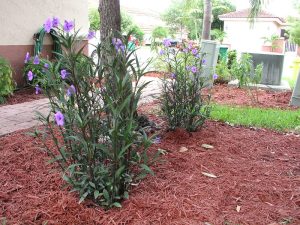You may be surprised to hear that the coontie is a native plant with ancient origins. Let’s delve into its origins, growing conditions, and ecological significance.

Origins of the Coontie
The coontie (Zamia integrifolia), also known as Florida arrowroot, is indigenous to the sandy soils of Central and South Florida. Although the coontie looks like palm or fern, it is actually a cycad. Cycads are primitive plants that produce cones instead of flowers, with lineage that predate most flowering plants. Coontie is the only cycad native to the Unites States. It has historical significance as a staple food source for Native American tribes, who utilized its starchy roots to make flour.
Growing Conditions and Characteristics
Coonties thrive in well-drained, sandy soils and are remarkably drought and salt-tolerant once established. They prefer partial shade but will tolerate full sun, are cold hardy, and are well-adapted to the local climate of USDA Hardiness Zones 8b-11.
Coonties thrives in habitats like pine flatwoods, coastal dunes, and oak hammocks. These evergreen plants can be used as border, accent, or coverage plants to attract butterflies. Mature coonties typically grow up to 3 feet tall, forming stiff, feather-like fronds. These fronds are attached to a thick stem underground.

In early spring, coonties showcase their trademark orange to red seed cones. The plant is an excellent addition to landscapes, and supports local wildlife such as the Alata caterpillar, which only feeds on the coontie.

The Threat of Invasive Species
While native and non-invasive-exotic plants contribute positively to local ecosystems, invasive-exotic species threaten native flora and disrupt ecological balance. In Florida, invasive species such as Mexican petunia and Brazilian pepper-tree endanger native habitats, which is why it is important to choose suitable plants for a landscape. Learn more about invasive plants here: https://livinggreen.ifas.ufl.edu/topics/landscaping/invasive-exotic-plants/.

Why Plant Native Species?
Native plants like the coontie require minimal maintenance once established, don’t need supplemental irrigation, have low fertilizer needs, and few pests compared to non-native alternatives. Native plants also provide critical habitat and food source to local wildlife.

Have a question?
Follow us!
 5
5
